In 2012, members wrote stories of Edmonton section adventures and people to celebrate our first hundred years. Here is one of those stories, in which Ernst Bergmann recounts an expedition to replicate the first ascent of Mount Edmonton.
I don’t exactly remember where the idea came from or whose it was. I’m reasonably certain that beer consumption played a role in the genesis. In the end, it didn’t matter. Somebody had beaten us to it by almost a century.
We were brainstorming ways to celebrate the 2012 section centennial. One idea was to attempt a centennial climb and name a mountain. Could we find an unnamed peak and christen it “Mount Edmonton”? Everybody involved thought it was a grand idea. (Did I mention there was beer involved in these deliberations?)
We soon learned the idea was neither novel nor unique.
Almost 100 years ago, the founding member of the Edmonton Section, Cyril Wates, had the same grand plan. And the unofficial naming and first ascent of “Mount Edmonton” was even reported in the 1921 Canadian Alpine Journal (Vol. XII, pp.73-6). A second recorded ascent was described on a website by the late Rick Collier. Rick, in his remarkable quest to climb all the named mountains in the Rockies, had attempted Wates’s Mount Edmonton twice and succeeded to reach the impressive summit cairn in 1992. Upon reaching the summit Rick was fortunate enough to still find the original summit record from the first ascentionists (scratched on ACC stationary no less). Rick was kind enough to provide us with slides from his successful summit attempt, including one of the 1921 summit register.
After further deliberations, possibly facilitated by even more beer, we decided that we needed to take a first-hand look at the mountain and the remarkable summit cairn, as well as to retrieve the summit record for posterity purposes.
And so it was that on the July long weekend, 2010, a large group from the Edmonton Section – led by myself and Neil Bosch – headed up the trail from the Radium highway towards the Simpson River and Rock Lake. Various weather forecasts predicted storms, deluge, and other nasty things, but the team pressed on undeterred. The trail from the highway crosses the Vermillion River and then follows along the north bank of the Simpson River towards Mount Assiniboine Provincial Park. The area had been severely burned in the 2003 Kootenay Fire, and the remnants of the very intense burn were still very obvious. It was, however, much more beautiful than expected. Among the blackened, fallen, and standing witnesses of the fire, new growth was everywhere: lush, and deeply green in contrast to the scarred surroundings. Signs of moose and other wildlife were abundant. The Simpson River was raging, and, while our hike in was dry, evidence of a very wet summer was everywhere.
We spent Canada Day camped at Rock Lake after an eighteen-kilometre hike from the highway, the last part of which took us under the south face of Wates’s Mount Edmonton. The campsite at Rock Lake is very nice, albeit a bit damp in the early summer. From a little rise across the creek, we enjoyed the evening glow reflected on the flanks of the great Mount Assiniboine.
Mount Edmonton presents formidable faces on most sides. Wates, writing in 1921, compared it to the north face of Mt. Victoria, “just a 1000′ less in height.” The mountain is labeled “Simpson Ridge” on the map and is the extension of the long ridge that starts at Assiniboine with Nub Peak. It features an extensive, flat summit plateau (not unlike the Edmonton landscape) – but, on almost all sides, steeply drops away. The col on the east, between Edmonton and Nestor Peak, presents the most accessible route up the mountain with mostly easy scrambling from either Golden Valley or Rock Lake.
In July 1920, Wates’s group – in the company of the long-time ACC Director, Arthur O. Wheeler – was on their way to the Club’s annual mountaineering camp at Mount Assiniboine. By most accounts, a trip to the camp in 1920 was a fairly relaxed affair in comparison to the GMC of today. Section members leisurely traveled to the mountains by train or, still rarely in 1920, by car, and then spent several relaxed days on foot or horseback to reach the camp location. Climbing peaks along the way as opportunities presented was the norm, for trips to the mountains in those days were not as frequent as they might be today. And so when the opportunity climb mountains presented themselves, Edmonton members made the most of their holidays!
Back in Wates’s time, the Edmonton Section contingent was camped north of the mountain in the Golden Valley. And they had time to spare before the official start of the Assiniboine camp. Wates took the opportunity to study the face of Mount Edmonton and convinced others to join him in an attempt.
The north face of the mountain is formed by two bowls separated by a central arête. Both bowls still contained remnants of pocket glaciers in 1920 – not so today.
Wates led the small party into one of the bowls hoping that it would eventually connect to the ridge and the summit thereafter. Unsuccessful, they gave up after a long day of scrambling. They had picked the wrong bowl. Early the next morning, a smaller, hard-core group of only three Edmonton Section members was again on their way to try the alternative route up the more northerly bowl. Joining Wates was his frequent climbing partner and long-term section stalwart and Chair Harry Bulyea, Dean of Dentistry at the UofA, and a young UofA arts student, Margaret Gold. Wates had studied the face and saw a route that might work. Gold was impressed. “Mr. Wates,” she later wrote, “he never fails.”
About ninety years later…, our large group of Edmontonians had an early start under a broken sky to find the creek that runs down from the col. Following the creek, and then some steep scree and short rock ledges, the group made the Edmonton- Nestor col in good time. With the weather starting to deteriorate, the group followed the ridge onto the large, snowy summit plateau. Thankfully, the highest point of the summit plateau – marked by an impressive cairn built by Wates, Bulyea, and Gold – is located in the northeast corner and was reached with little post-holing in the old snow by midmorning. The remaining deep snow on the summit plateau made further exploration impractical. Just after the group reached the summit, the weather turned and it started to snow.
Wates, Bulyea, and Gold had climbed for fifteen hours to reach the summit plateau. They reached the summit at 5:00pm and proceeded to construct the eight-foot cairn. Wates naming the mountain “Mount Edmonton” and dedicated their ascent to Arthur Wheeler, who was back at camp in the Golden Valley. They then proceeded to the east col, descended into the Golden Valley, and bushwhacked back into camp. Seventy years later, Collier was delighted to find a small container with the original summit record still inside the cairn.
The Edmonton Section group in 2010 spent thirty minutes in rapidly deteriorating conditions searching every crevice of the cairn, but the summit record was not to be found. As the snow became heavy, and then turned to rain, the group quickly descended to the camp. After a quick discussion, we broke camp and marched out to the trailhead in the rain. After dinner at the Outpost Pub in Lake Louise, we finally ended the day with a celebration at Neil Bosch’s cabin in Nordegg. (Early in the morning we finally ran out of beer).
After Wates published the account of their 1920 ascent in the CAJ, a description of “Mt. Edmonton” made it into the guide book as an unofficial name. Officially naming the mountain was never pursued. When we investigated the official procedures for naming the peak in 2010, it became quickly apparent that the bureaucracy we would have to surmount today was, well, unscalable – at least for us.
The challenge remains for future generations of Edmonton Section members!
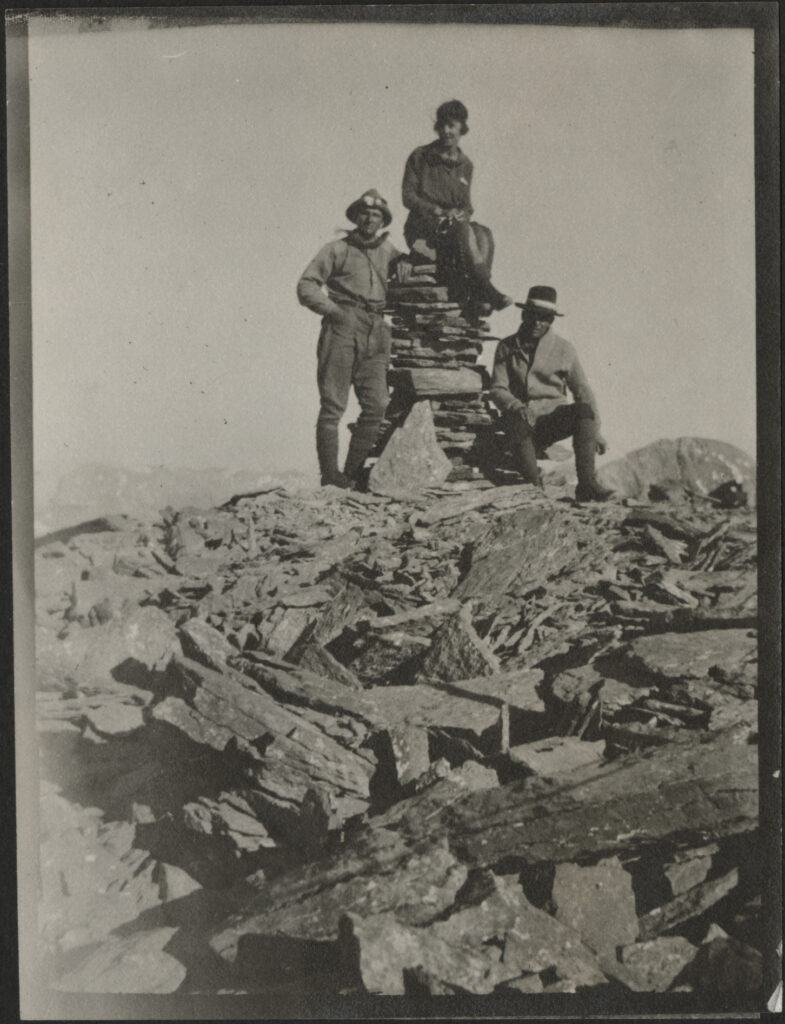
First Ascent of “Mount Edmonton”, July 1920. Cyril G. Wates, Margaret Gold, and Dr Harry C. Bulyea at the cairn they built at the summit of Mt Edmonton
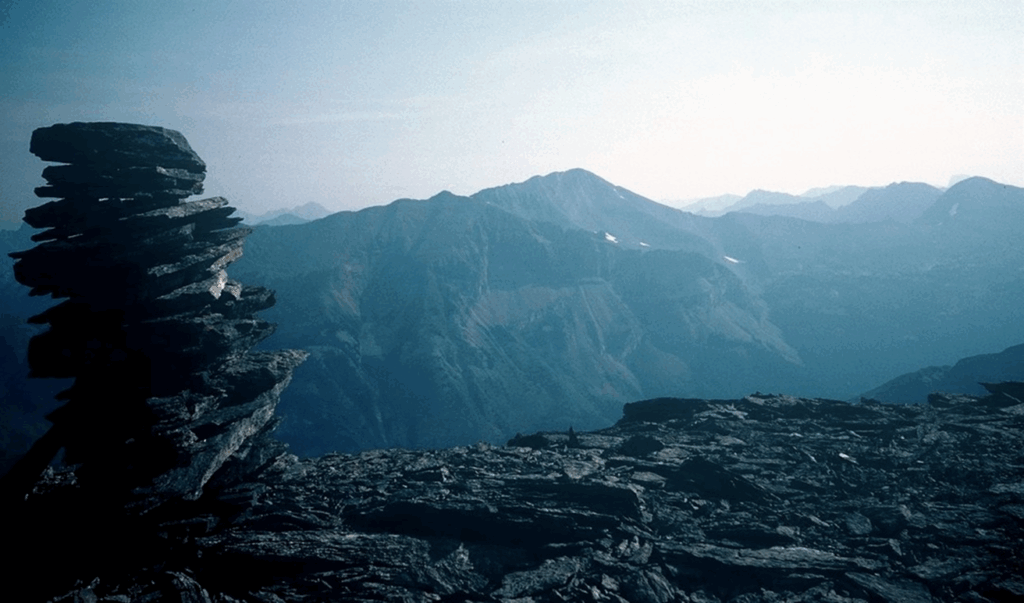
Summit Cairn of Mt Edmonton, (photo by Rick Collier ca 1991)
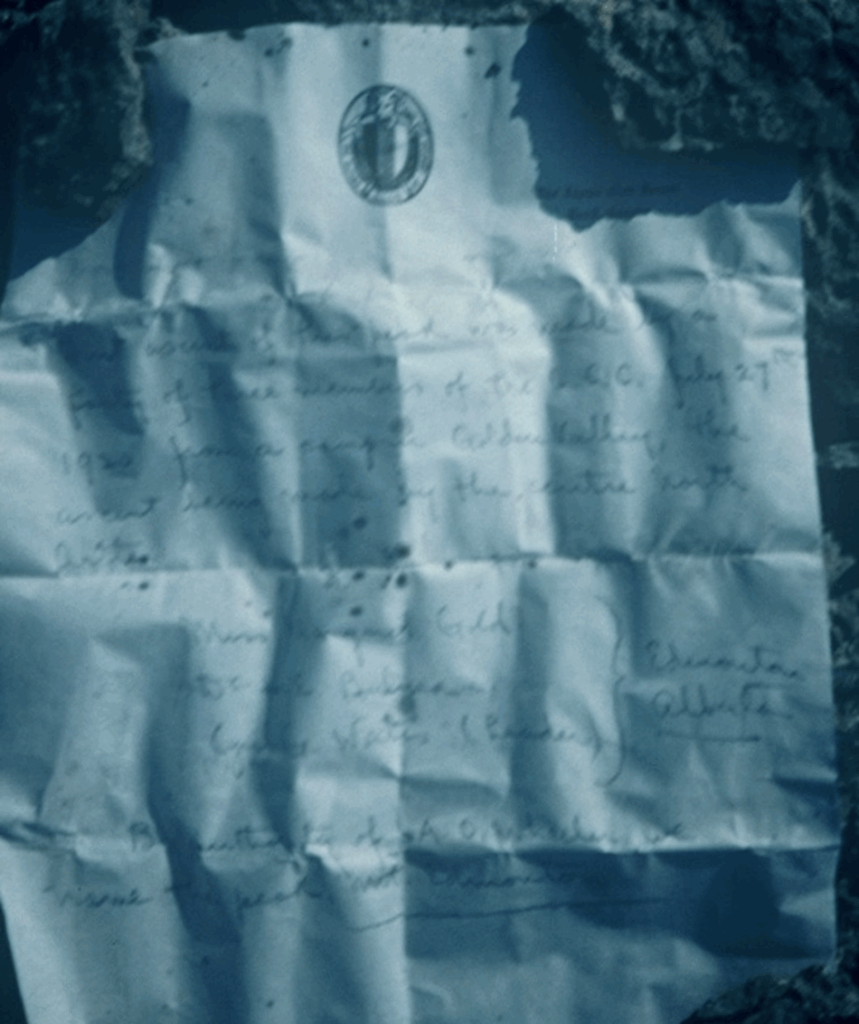
First Ascent record on ACC stationery 1920 Cyril Wates, Harry Bulyea, Margaret Gold (photo by Rick Collier)
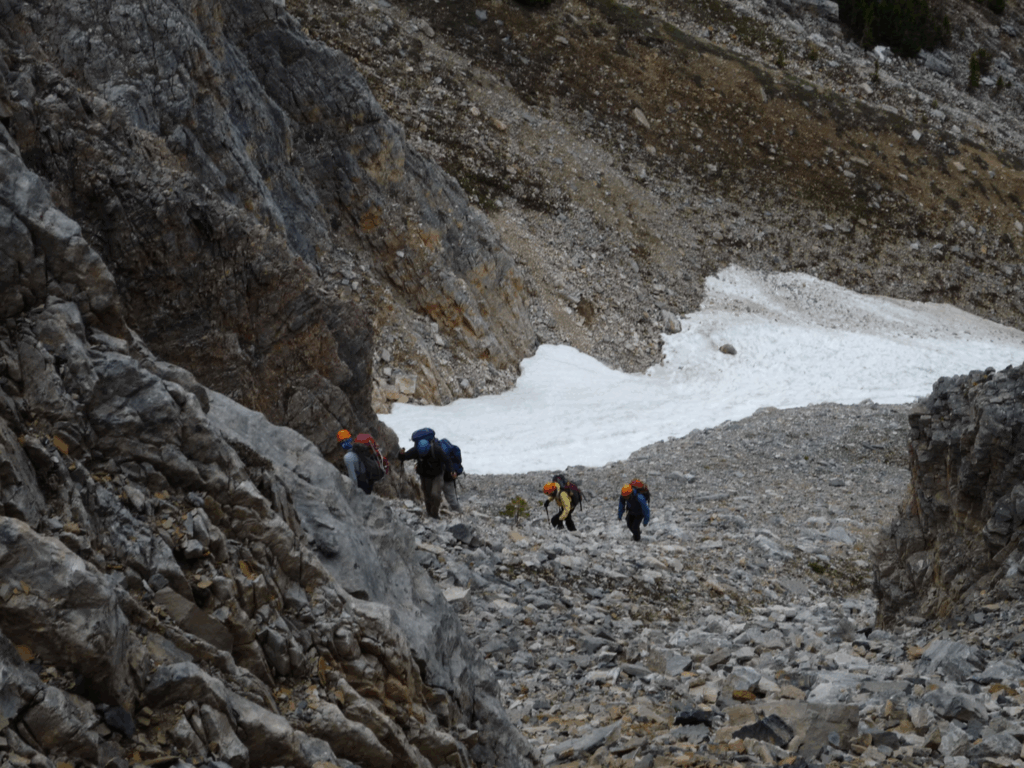
Ascending the gully on the West Side of Mt Edmonton from Rock Lake
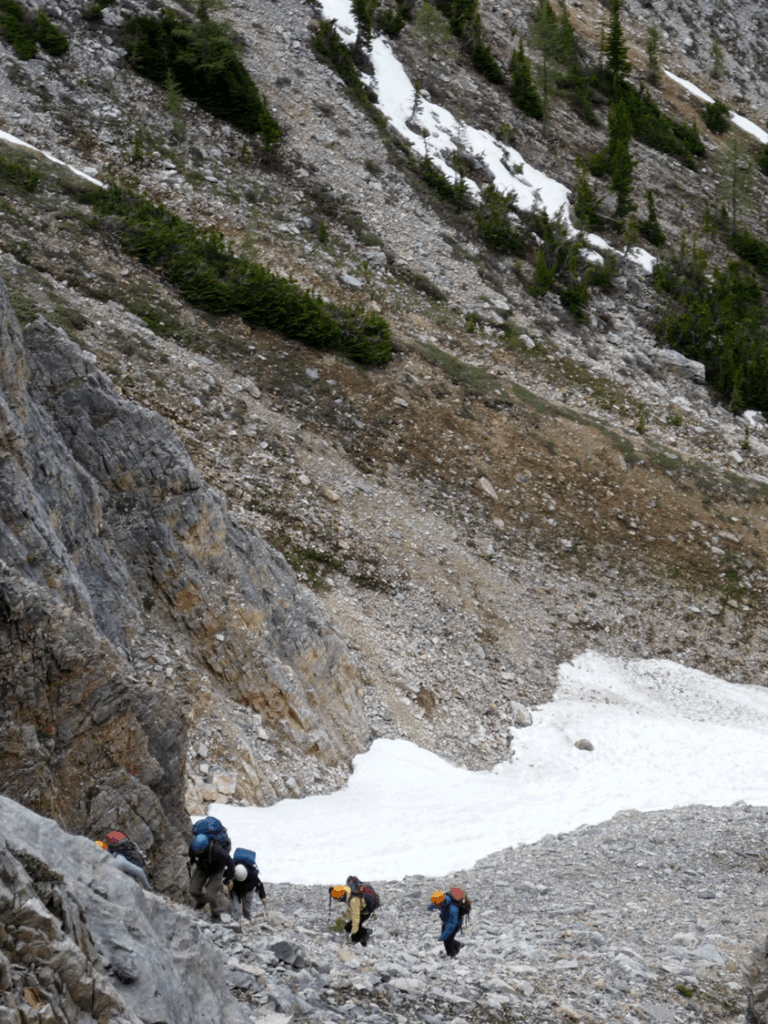
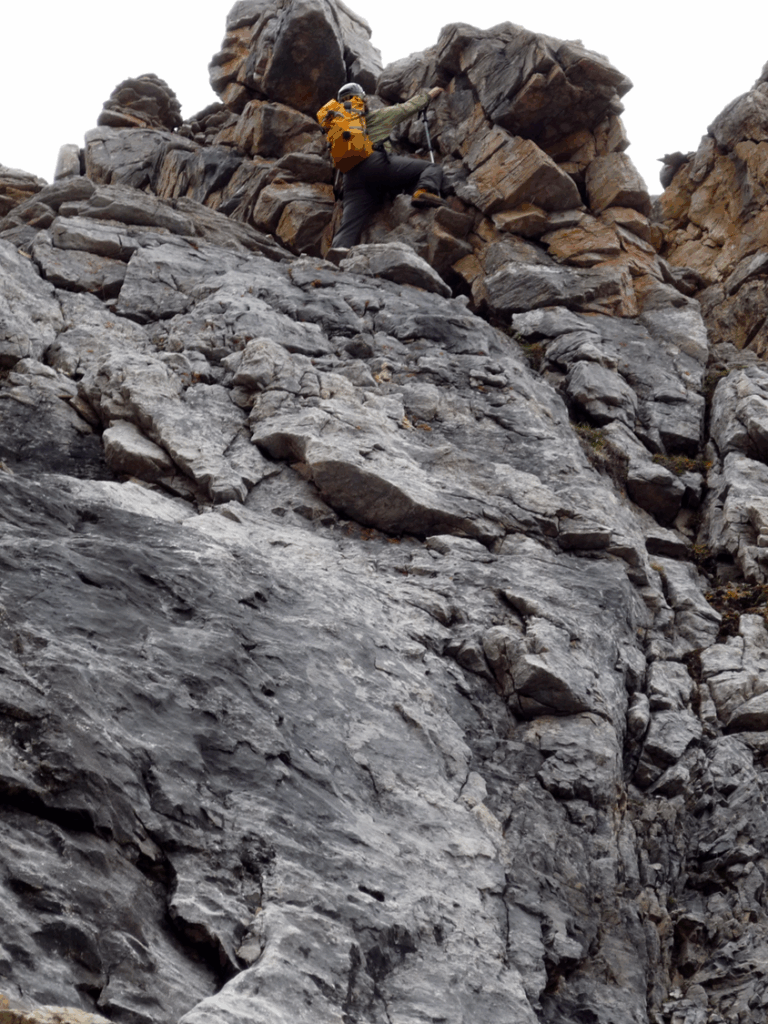
Neil Bosch scrambling final step to the summitt plateau
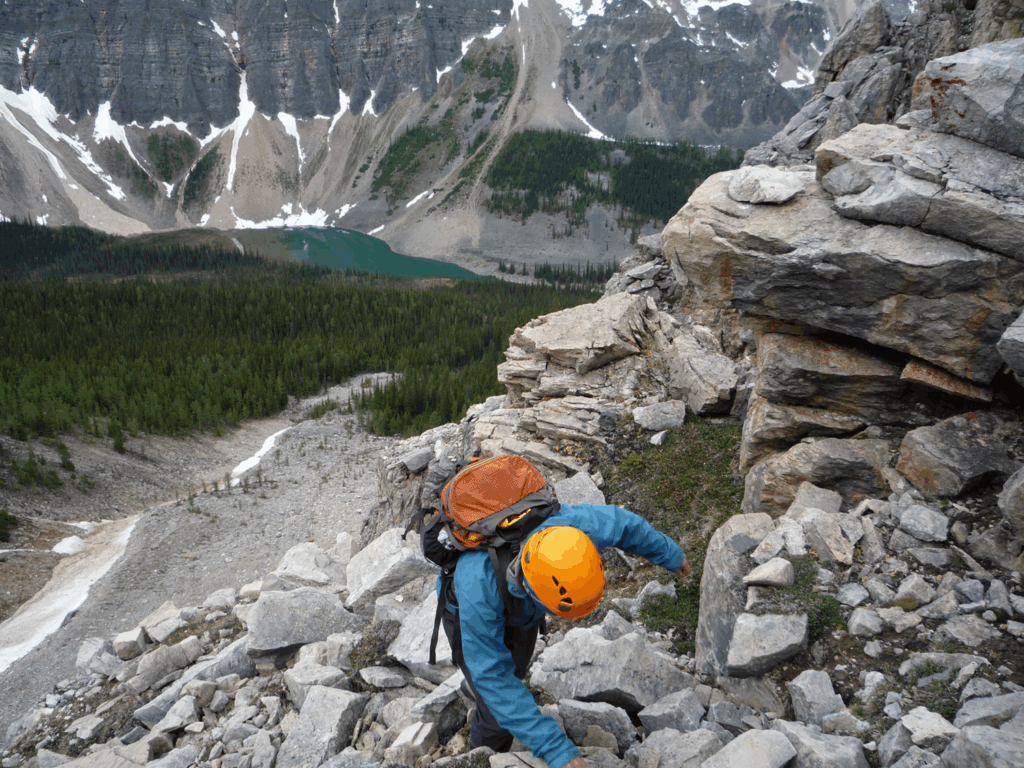
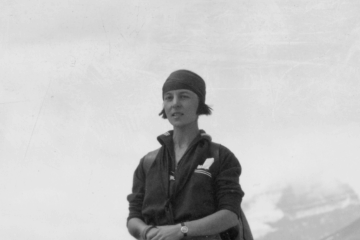
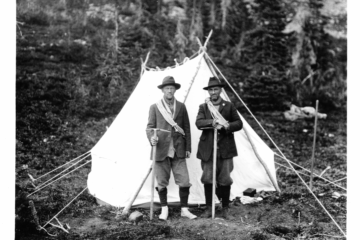
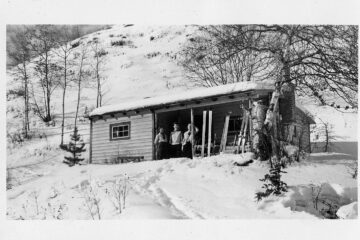
0 Comments